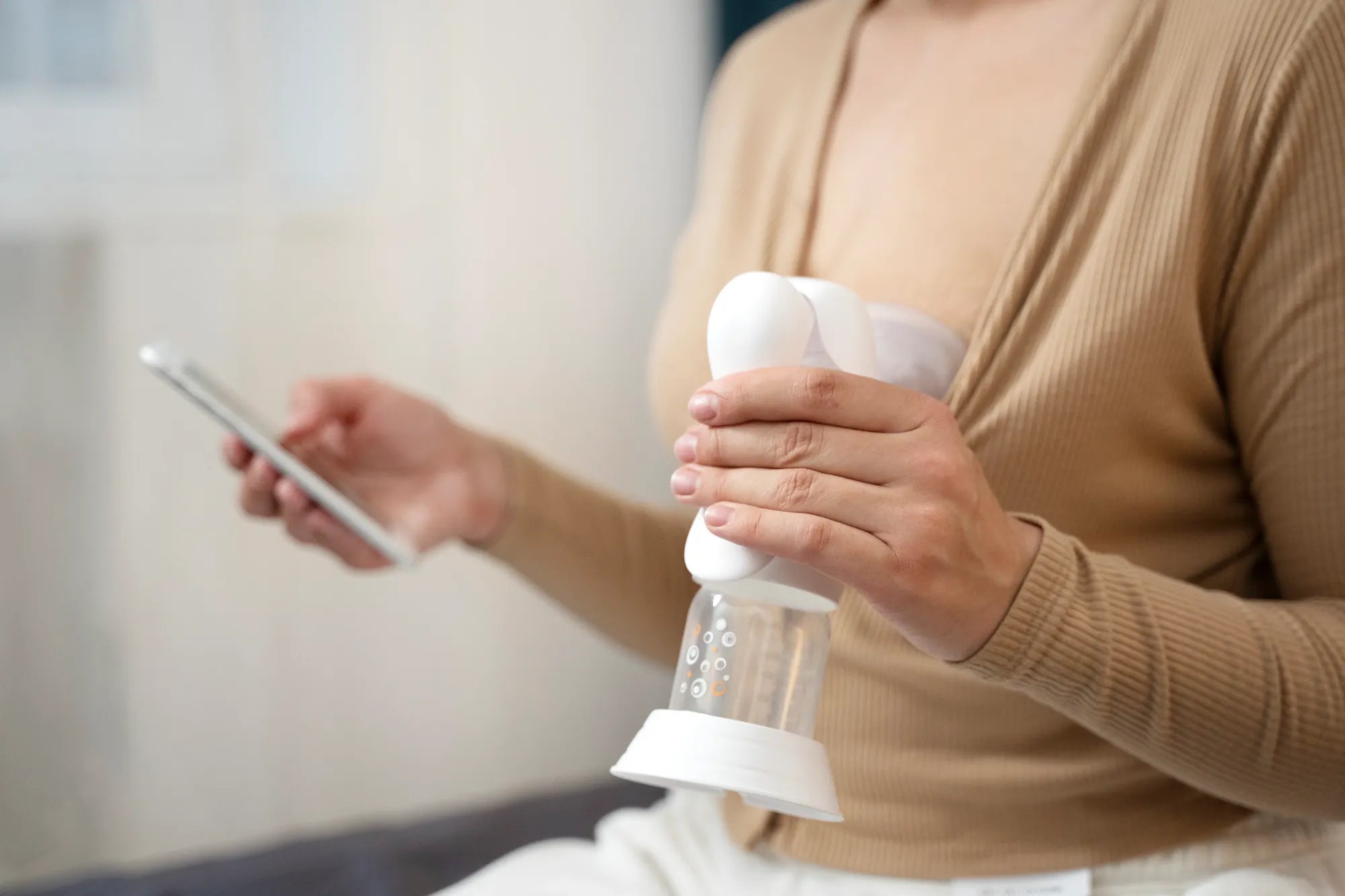Accueil
Pregnancy, Breastfeeding, and Pumping: The Ultimate Guide for Moms
How Effective Is a Manual Breast Pump: A Comprehensive Guide

How Effective Is a Manual Breast Pump: A Comprehensive Guide
Breastfeeding is a deeply personal and essential part of motherhood, but it doesn’t always come without challenges. For many mothers, expressing milk is a necessity, whether for convenience, health reasons, or to maintain milk supply. Among the various tools available, manual breast pumps have gained popularity for their simplicity and affordability. But how effective is a manual breast pump? This article dives into the details to help you understand its efficiency, benefits, and potential drawbacks.
Understanding Manual Breast Pumps
A manual breast pump is a handheld device designed to help mothers express breast milk. Unlike electric pumps, which rely on batteries or electricity, manual pumps require physical effort to operate. They typically consist of a handle, a breast shield, and a collection container. The user manually squeezes the handle to create suction, which mimics the natural sucking motion of a baby.
How Effective Is a Manual Breast Pump?
The effectiveness of a manual breast pump depends on several factors, including the mother’s comfort, technique, and milk supply. For some mothers, manual pumps are highly effective and provide a quick and efficient way to express milk. Others may find them less effective, especially if they have difficulty maintaining consistent suction or if they need to express large quantities of milk frequently.
One of the key advantages of manual breast pumps is their portability. They are lightweight, compact, and do not require a power source, making them ideal for on-the-go use. However, their effectiveness can be limited by the physical effort required, which may lead to hand fatigue over time.
Benefits of Using a Manual Breast Pump
Manual breast pumps offer several benefits that make them a popular choice among mothers:
- Affordability: Manual pumps are generally more budget-friendly compared to electric pumps, making them accessible to a wider range of users.
- Portability: Their compact design makes them easy to carry in a diaper bag or purse, allowing mothers to express milk wherever and whenever needed.
- Quiet Operation: Unlike electric pumps, manual pumps operate silently, providing discretion and privacy.
- Control: Users can adjust the suction strength and rhythm to match their comfort level, which can enhance milk expression.
Limitations of Manual Breast Pumps
While manual breast pumps have their advantages, they also come with some limitations:
- Physical Effort: The need to manually operate the pump can lead to hand fatigue, especially during prolonged use.
- Time-Consuming: Expressing milk with a manual pump may take longer compared to electric pumps, particularly for mothers with larger milk supplies.
- Limited Features: Manual pumps lack the advanced features of electric pumps, such as adjustable suction patterns and memory settings.
Tips for Maximizing the Effectiveness of a Manual Breast Pump
To get the most out of a manual breast pump, consider the following tips:
- Practice Proper Technique: Ensure that the breast shield fits comfortably and that you are using the correct suction rhythm. Experiment with different techniques to find what works best for you.
- Stay Relaxed: Stress and tension can hinder milk flow. Find a quiet, comfortable space and take deep breaths to relax before pumping.
- Use Warm Compresses: Applying a warm compress to your breasts before pumping can help stimulate milk flow and make the process more efficient.
- Pump Frequently: Regular pumping sessions can help maintain milk supply and improve the effectiveness of the pump over time.
Comparing Manual Breast Pumps to Other Options
When deciding whether a manual breast pump is the right choice, it’s helpful to compare it to other options, such as electric pumps and hand expression. Electric pumps are known for their efficiency and convenience, but they are often more expensive and less portable. Hand expression, on the other hand, requires no equipment but can be time-consuming and less effective for some mothers.
Manual breast pumps strike a balance between these options, offering a middle ground in terms of cost, portability, and efficiency. However, the best choice ultimately depends on your individual needs and preferences.
Is a Manual Breast Pump Right for You?
Determining whether a manual breast pump is effective for you depends on several factors, including your lifestyle, milk supply, and comfort level. If you value portability, affordability, and simplicity, a manual pump may be an excellent choice. However, if you require frequent or large-volume pumping, you may find an electric pump more suitable.
Ultimately, the effectiveness of a manual breast pump is highly individual. By understanding its benefits and limitations, you can make an informed decision that supports your breastfeeding journey.
Whether you’re a new mom or an experienced parent, finding the right tools to support breastfeeding is crucial. A manual breast pump can be a valuable addition to your toolkit, offering convenience and flexibility when you need it most. Explore your options, experiment with different techniques, and discover how effective a manual breast pump can be for you.
Partager
